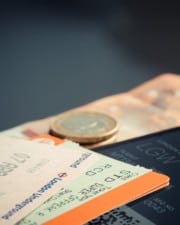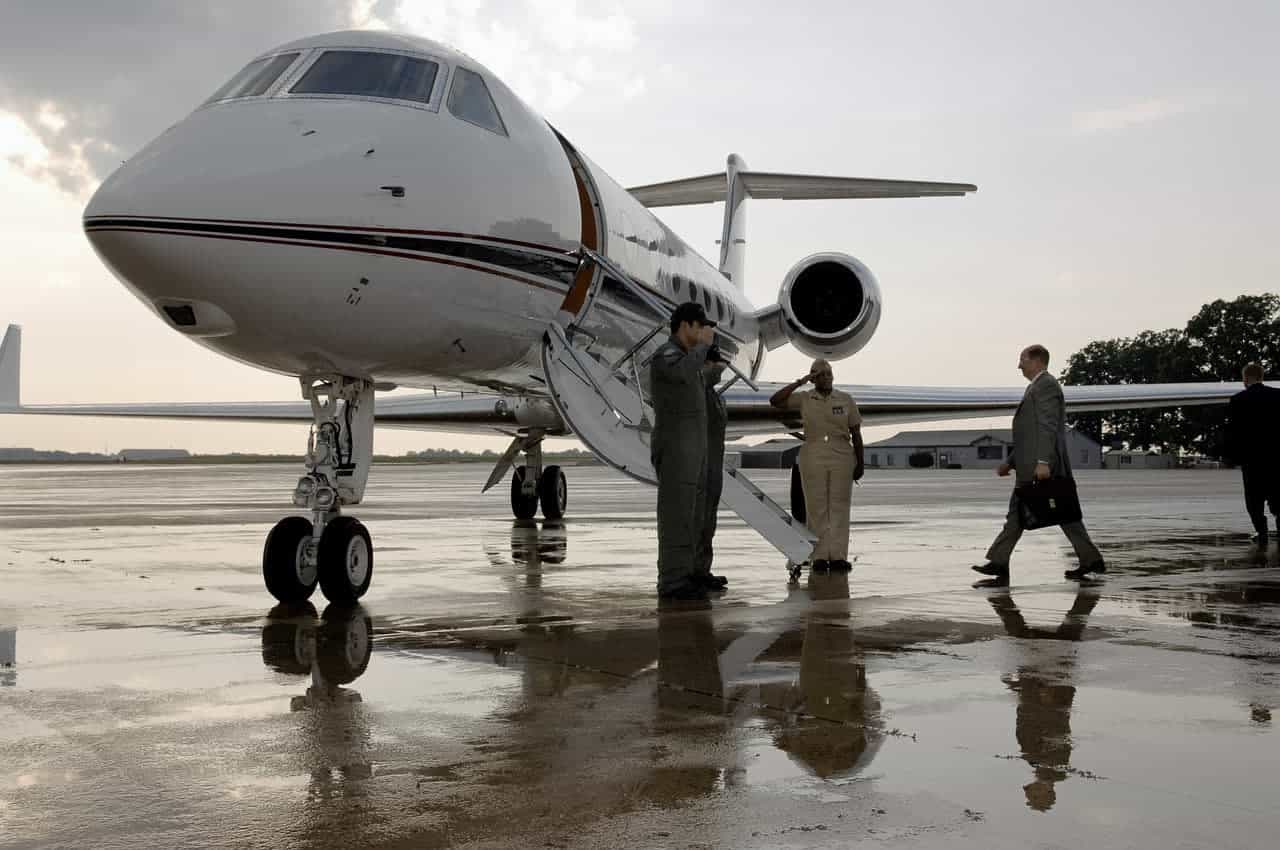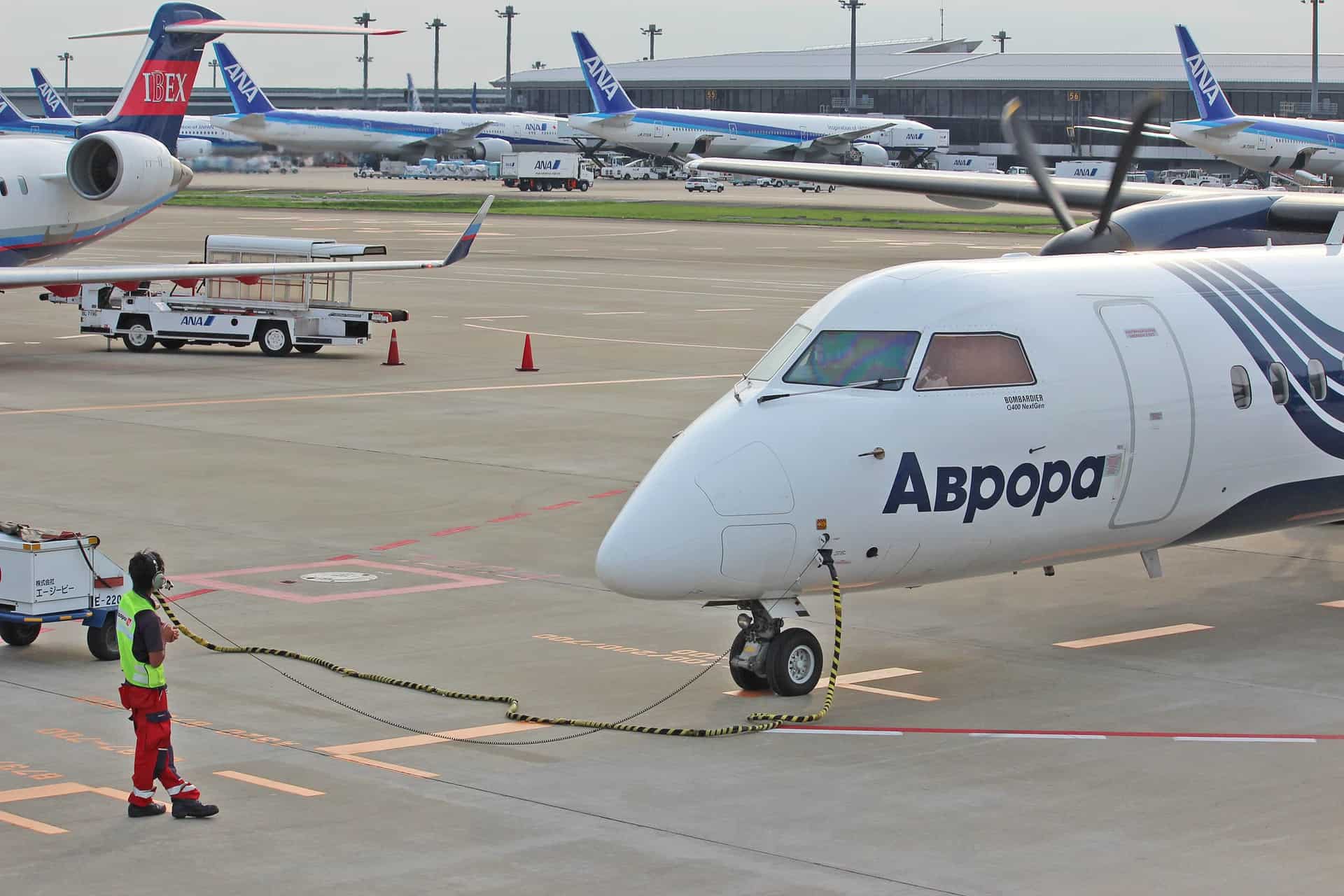When most people think of flying in style, what they fantasize about is beyond airport check-in hassles. Instead, they consider privacy, comfort, flexibility, and luxury. And when it comes to fast, luxurious trips, private jets are not the only options. These expensive turboprop planes are plenty luxurious…
Contrary to popular belief, turboprops offer as much luxury as private jets, if not more in some cases. So, for wealthy individuals, business executives, and celebrities who take luxury and comfort seriously, including their choice of aircraft, these planes can be equally very rewarding.
Turboprops are widely known for affordability in terms of operational costs. While some cannot fly as far as many jets, these planes can attain an altitude of 35,000 ft yet burn less aviation fuel.
Read more: Why Are Turboprops Still Used?
Businesses love these planes, especially those requiring flight services of up to 1000 miles or to airports with runways too short for jets. They typically accommodate between five and ten passengers and are manufactured in varying sizes and designs.
With prices ranging from $4 to $8 million for new twin-engines and $2 to $5 million for single-engines, turboprops are always in high demand. But, of course, used models are way cheaper.
The turboprops on our list consist of single and double engine models and feature state-of-the-art modern navigational systems, configurations, and sleek interiors. They are also some of the most exciting choices on the market.
Table of Contents
- 11. Daher (Quest) Kodiak 100 – $2.5 Million
- 10. Cessna Grand Caravan EX – $2.8 Million
- 9. Piper M600 – $3.3 Million
- 8. Beechcraft King Air C90GTX – $3.8 Million
- 7. Daher TBM 930 – $4.1 Million
- 6. Daher TBM 940 – $4.6 Million
- 5. Pilatus PC-12 NGX – $5.36 Million
- 4. Piaggio P.180 Avanti EVO – $7.7 Million
- 3. Beechcraft Super King Air 350i – $8 Million
- 2. Beechcraft King Air 360 – $8.4 Million
- 1. Bombardier Q400 – $21 Million
11. Daher (Quest) Kodiak 100 – $2.5 Million
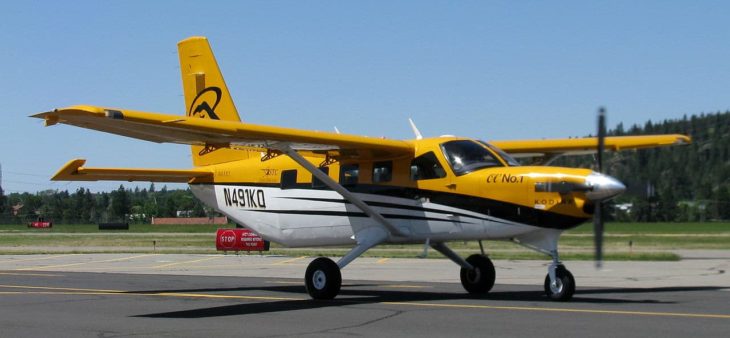
The least expensive on our list of most expensive turboprops is the Daher Kodiak 100 (formerly known as the Quest Kodiak 100). This advanced 10-seater short takeoff and landing aircraft is built tough and safe for extreme missions.
The aircraft is versatile; you can convert it from passenger to cargo plane or any other type of operation such as rafting. Kodiak 100 is unpressurized, unlike many other turboprops, but its door seals reduce noise.
At $2.5 million, the single-engine Kodiak 100 is renowned for its comfort, capacity, and economy for business or personal use. The aircraft’s maximum speed is 174 knots at 12,000ft with fuel consumption of 48 gallons per hour, yielding 1,005 nautical miles over 5.8 hours.
Only one pilot is needed to operate the Kodiak 100, with hourly operational costs averaging $450 per hour.
10. Cessna Grand Caravan EX – $2.8 Million

The Grand Caravan EX is a swift plane designed for challenging missions with high payloads. It has a travel distance range of 807 nautical miles at 25,000 ft and is suitable for short and rough runways.
This aircraft boasts a large, spacious cabin at an average cost of $2.8 million for a new model. It offers comfort for business and personal flights, ample storage, and durable stain-resistant ergonomic seats.
As a bonus point, you can choose the interior design and color you want, from oasis, savannah, and canyon. Oasis is a blend of quality materials and luxury; savanna is classic neutral khaki, while canyon has a contrast of black and khaki.
The Cessna Grand Caravan EX has cabin hardware that can allow you to convert it from passenger to cargo aircraft or a combination of both. The Grand Cessna Caravan EX has an hourly operating cost of $579.
9. Piper M600 – $3.3 Million
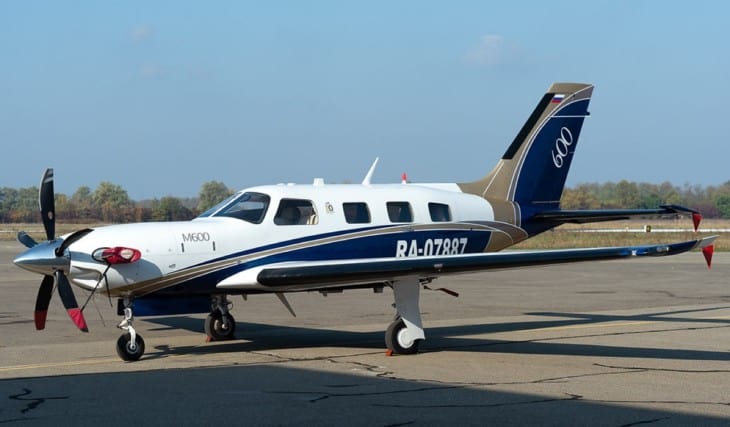
The Piper M600 is in a class of its own regarding luxury air travel. The interior is made with premium leather to take comfort a notch further. You can also select from multiple sophisticated color palettes for the interior.
For maximum comfort, all seats of the M600 are in fine leather. You can choose one or two interior seating schemes too.
Powered by a 600-horsepower single turboprop engine, the M600 aircraft accommodates six passengers, including the pilot. It can reach a peak speed of 507 kilometers per hour at an altitude of 30,000 ft.
Piper describes the M600 as the aircraft designed to raise industry expectations for performance and operational ease in a single-engine pressurized turboprop. It has an operating cost of approximately $892.81 per hour.
8. Beechcraft King Air C90GTX – $3.8 Million

This aircraft is a passenger delight due to its square-oval design that gives more room for the head and shoulders. In addition, the advanced craftsmanship of the King Air C90GTX stands it out as a luxury turboprop.
A variant of the progenitor of the King Air series, the King Air 90, the King Air C90GTX is supposed to combine the best of 1960s reliability with modern technology, comfort and style.
Compared to others in its class, the King Air C90GTX has a large cabin suitable for business use. It accommodates six persons, including the pilot. In addition, its cabin has 26 tuned vibration absorbers for extra comfort with a belted lavatory seat that can serve as a seat.
There are as many as five different color or style options to enhance the comfort and aesthetics of the King Air C90GTX cabin. These options are beechwood, greige, mocha, parchment, and silver.
Often described as versatile, it boasts an excellent range and payload with a maximum operating altitude of 30,000 ft. It has winglets for improved takeoff performance, making it fuel-efficient. Hourly operational costs for the King Air are estimated at $1,560.
7. Daher TBM 930 – $4.1 Million

The single-engine Daher TBM 930 is favored for its speed, which is faster than some private jets. At cruise, it has a speed of up to 330 knots and a maximum range of over 1,700 miles at the approved 31,000 ft altitude.
The turboprop comes with Garmin’s G3000 avionics, which gives it electronic stability and speed protection. It also moves the aircraft in an automatic descent mode to a safe altitude of 15,000 ft in case of cabin depressurization or lack of pilot response.
This six-seater aircraft has enhanced interior finishes with a luxurious pressurized cabin designed in a club seating arrangement. For added comfort, the plane has full-recline leather seats with padded armrests.
As an improved version of the TBM 900 executive transport, the TBM 930 is more fuel-efficient than its predecessor, with an hourly operating cost of $1,129.18.
6. Daher TBM 940 – $4.6 Million

Much like its predecessor, the aforementioned TBM 920, the Daher TBM 940 is similarly one of the cheapest turboprops on the market. With a price tag of $4.6 million, the six-seater, single-engine turboprop debuted in 2019.
As an improvement of the Daher TBM 930, it features the latest cockpit technology with the Garmin G3000 avionics suite controlled by the new GTC 580 touchscreen controllers. Additionally, it has a maximum cruise speed of 330 knots and 1,730 nautical mile range, and an operating altitude of 31,000 ft.
Speed and modern technology are not all that the TBM 940 offers. The turboprop, one of the most advanced aircraft ever created, has a luxury interior. This aircraft is the first turboprop of its size to be equipped with an autothrottle.
The TBM 940, in addition to other features, also has turbulence detection and ground clutter suppression. The operating cost for the Daher TBM 940 turboprop is approximately $1,272 per hour.
5. Pilatus PC-12 NGX – $5.36 Million

The PC-12 NGX is one of the most expensive turboprops with its ultra-modern design. This aircraft has total recline seats that make long flights comfortable. The seats are lowered slightly to create better headroom for passengers.
The NGX is an improvement on its NG predecessors with its larger cabin window and modified flight deck. According to the Pilatus Aircraft – the PC-12 NGX emphasizes improved passenger comforts.
Based on customer input, the NGX’s seats, lighting, and environmental system were given significant makeovers compared to those present on its predecessor.
Combining speed, fuel efficiency, comfort, and safety, the PC-12 NGX is renowned as one of the world’s greatest turboprops for corporate or general aviation use. It is fitted with the latest in-flight entertainment, connectivity technologies, and an advanced cockpit environment.
Well worth its price at approximately $5.36 million, the NGX accommodates 10 passengers, in addition to the pilot. With a range of 1,803 nautical miles at optimal performance and a maximum altitude of 30,000 ft, the PC-12 NGX has an estimated hourly operating cost of about $1,063.78.
4. Piaggio P.180 Avanti EVO – $7.7 Million
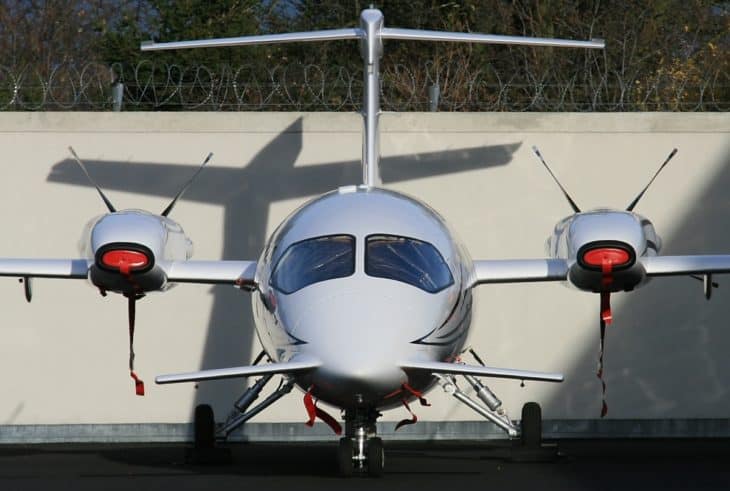
Regarding luxury, the P.180 Avanti EVO truly embodies the best of Italian style. With its unique craftsmanship and luxurious interior, this turboprop has earned its place on our list. Moreover, it has a speed exceeding 400 knots, making it faster than many private jets.
The aircraft is a travelers’ delight with improved service, a support network, and a new maintenance program designed to be cost-effective. These features increase efficiency, improve safety and comfort, and lower operating costs.
With its low noise footprint, this turboprop can climb faster than most planes in its category. The aircraft accommodates seven passengers with enough space to work and relax.
The spacious cabin has broadband and satellite connectivity, making it a suitable office with more comfort and luxury.
Besides serving business executives, the Avanti Evo is versatile enough to serve as an air ambulance or photogrammetric patrol unit. It can also be used as an in-flight inspection to calibrate air navigation instruments.
According to the most recent estimates, the Avanti EVO has an operating cost of about $2,500 per hour.
3. Beechcraft Super King Air 350i – $8 Million
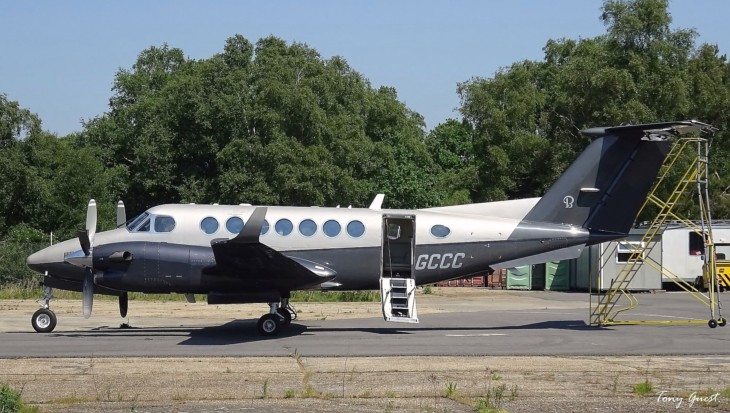
A member of the famed Super King Air family, the Super King Air 350i is renowned for its flexibility, luxury, and comfort. An improvement of the King Air 350, the 350i features a cozy cabin configuration that can be swapped for different missions.
This turboprop is equipped with the Rockwell Collins Pro Line 21 avionics suite and has a unique design for private air travelers. The avionics with its full touchscreen simplifies navigation and communication, featuring standard synthetic vision and enhanced situational awareness.
With its twin-turbine engine, the Beechcraft King Air 350i is an attractive aircraft that accommodates eight passengers in club-style seating in its two-cabin zones. The luxurious interior is fitted with a laminated cabinet, electronic shutters, wool carpet, and a modular refreshments center.
This turboprop is designed for optimal performance and can fly up to 14,000 nautical miles non-stop at a maximum cruise altitude of 35,000 ft. The average operational cost for the luxury it offers is approximately $1,290 per hour.
2. Beechcraft King Air 360 – $8.4 Million

For the latest upgrade to a turboprop, the Beechcraft King Air 360 should be one of your top choices. With updates to the airframe, avionics, and interior, it is considered the latest improvement to one of the sky’s most iconic aircraft.
The King Air 360 is on our list of most expensive turboprops for many reasons; this includes its enhanced digital pressurization system. It also has onboard maintenance system updates, a full regime autothrottle, and six new interior schemes.
The plane is modeled after luxury SUVs, with cabin improvements and contemporary design. These designs include a reshaped cabinet, an upgraded seat design, illuminated cup holders, and low-profile air and light adjusters.
The King Air 360 is engineered with the Collins Aerospace Pro Line Fusion flight deck, which includes three 14-inch touchscreen displays. At an estimated $8.4 million, it is the latest design and best-selling turboprop in the King Air family.
Engineered for adventure and comfort with a maximum range of 1,806 nautical miles and a cruise level of 35,000 ft, it has an average operational cost of $754.
1. Bombardier Q400 – $21 Million

The Bombardier Q400 (also known as the de Havilland Canada Dash 8) has a flyaway cost of an estimated $21 million and is known for its extra payload capacity and the ability to handle freezing temperatures.
One of the key features is its advanced and powerful engine, reputed to have two times the horsepower of a typical turboprop.
Though designed for shorter flights than many in its class, this aircraft makes up for this shortcoming with its noise and vibration suppression system.
Another key feature is the number of passengers it accommodates. In a typical configuration, the Q400 can seat up to 76 though it can seat a maximum of 90 people.
The Dash 8/Q400 cabin is installed with air-stairs that allow the aircraft to use airports with limited ground support facilities. Its two passenger doors and another service door enable the turboprop plane to embark and disembark passengers quickly.
Apart from corporate flyers, airlines love this aircraft too, as the Q400’s spacious interior and comparatively low operating costs made it a favorite of regional and feeder airlines alike!
At an average speed of 1,362 nautical miles and an altitude of 25,000 ft, prior to their sale of the Q400 brand in 2019, Bombardier had an impressive annual delivery rate of more than 30 Q400s to a variety of corporate and airline clients.
In part due to its much larger size, the Q400 has hourly operating costs of around $4,670 for airlines or $7,283 for corporate operators.
Related Posts










